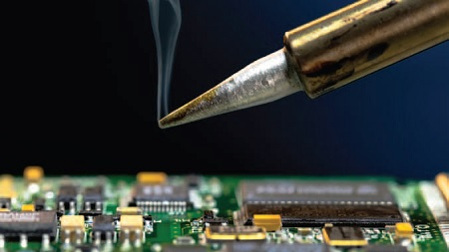Why I Support the Right to Repair
The world of electronics repair seems to be changing.
At one time we could expect that a company making an electronic product would provide at least basic service literature (description of function, block diagram, schematics) to people who owned the product and any repair personnel they might employ. When companies no longer wanted to support the products, they would allow the info to be shared among users and repair techs; ultimately, as a company passed from the marketplace, the information would go into the public domain.

credit: iStockphoto/luchschen
With development of the internet, some companies (or at least owners of the names of those companies) decided there was money to be made by reselling that old information as “content” on the web. An example is the Heathkit Company; after decades of disuse, the company name was purchased by a firm in California, and cease-and-desist letters went out to prohibit user sharing of the service literature online.
This change might be frustrating for engineers and technicians, but there is something even worse brewing.
Increasingly in recent years, companies have been unwilling to share basic service literature — even mere schematics — because they claim designs of their products are “proprietary.” You can forget about these outfits providing the information free to owners; you can’t even buy it!
Among companies taking this approach, the most well-known offender is Apple. They have gone so far as to try to make it illegal to repair their products if you are not an Apple Authorized Service Center. And they won’t provide service info to anyone else.
The professional video industry's #1 source for news, trends and product and tech information. Sign up below.
Engineers and technicians have pointed out that with a close look at the hardware, one can see it is quite ordinary — the circuits are usually straight from examples on the datasheets of the components. In my view, the “proprietary” stuff might be the software inside the chips — which wouldn’t be documented in the service literature anyway — not the hardware. Yet these companies hold that all the information is secret.
I’ve read that some automobile manufacturers are trying this legal approach as well. If they get their way, we won’t be able to get service info, and no one except dealers would be allowed to repair the vehicles commercially.
Some companies go so far as to claim the purchaser does not even own the product; we are only “licensed” to use it.
These attitudes have spawned a movement among professional service technicians and home repair hobbyists called the “Right to Repair.” This philosophy holds that we should be able to repair our own equipment (or choose who to hire to do a repair), and that the same service documentation available to “authorized” repair facilities should be reasonably obtainable by users or independent service shops.
HOW THIS AFFECTS ENGINEERS
An issue of this sort that I encounter as a broadcast engineer is the idea that “there are no user-serviceable parts inside.”
A well-known provider of uninterruptible power systems and power management devices was the most recent company to pull this one on me. We had a model of their products deployed at many of our studio and transmitter sites, and after a year or two of service they all started to fail, one after another. I analyzed the problem and saw that the same failure mode was common to them all. A Zener diode appeared to be slightly underrated and eventually would short.
I tried to work with the manufacturer to get the service info — even just the specs of the failing Zener diode — but they denied there was a problem and would provide no technical details of their product. Their excuse was “no user-serviceable parts inside.”
I traced out the circuit and made the repair, but it took longer than if I’d had the documentation. The failure to acknowledge a known problem, and the “no user-serviceable parts inside” statement, has soured me on this company’s products and I will be far less likely to do business with them.
Another example: A couple years ago I was going to purchase a number of new modulation monitors for my company’s transmitter sites. I ordered one to try it out, but there was no service info at all included — just a one-sheet “user guide.” I asked for the service manual and was told that it was proprietary information and not available. I said that if they didn’t provide that info with their products I would not be buying it. The company chose to forego my order rather than release the information. I gladly placed my order with a competitor, who provided a good manual with the basic service information I require.
LET ME DECIDE
Discussing this with several broadcast equipment manufacturers, I found attitudes mixed.
Most companies make service documentation available to purchasers and encourage engineers to repair the equipment. But a few took a negative view, saying “Radio stations don’t repair stuff anymore” or “If I put that information out there my competitors will steal it.”
Access to basic service information is important to our industry. As broadcast engineers, we should be able to decide if a failed device should be repaired or replaced and to what level we will pursue a repair. The ability to service professional equipment to the component level is very important to me, even if we do not pursue it in every instance. I feel I have the right to repair anything I own, and for professional products I expect the manufacturer to provide the basic info that makes this practical.
Steve Johnston is the director of engineering and operations for Wisconsin Public Radio.
This article originally appeared on TVT's sister publication Radio World.
